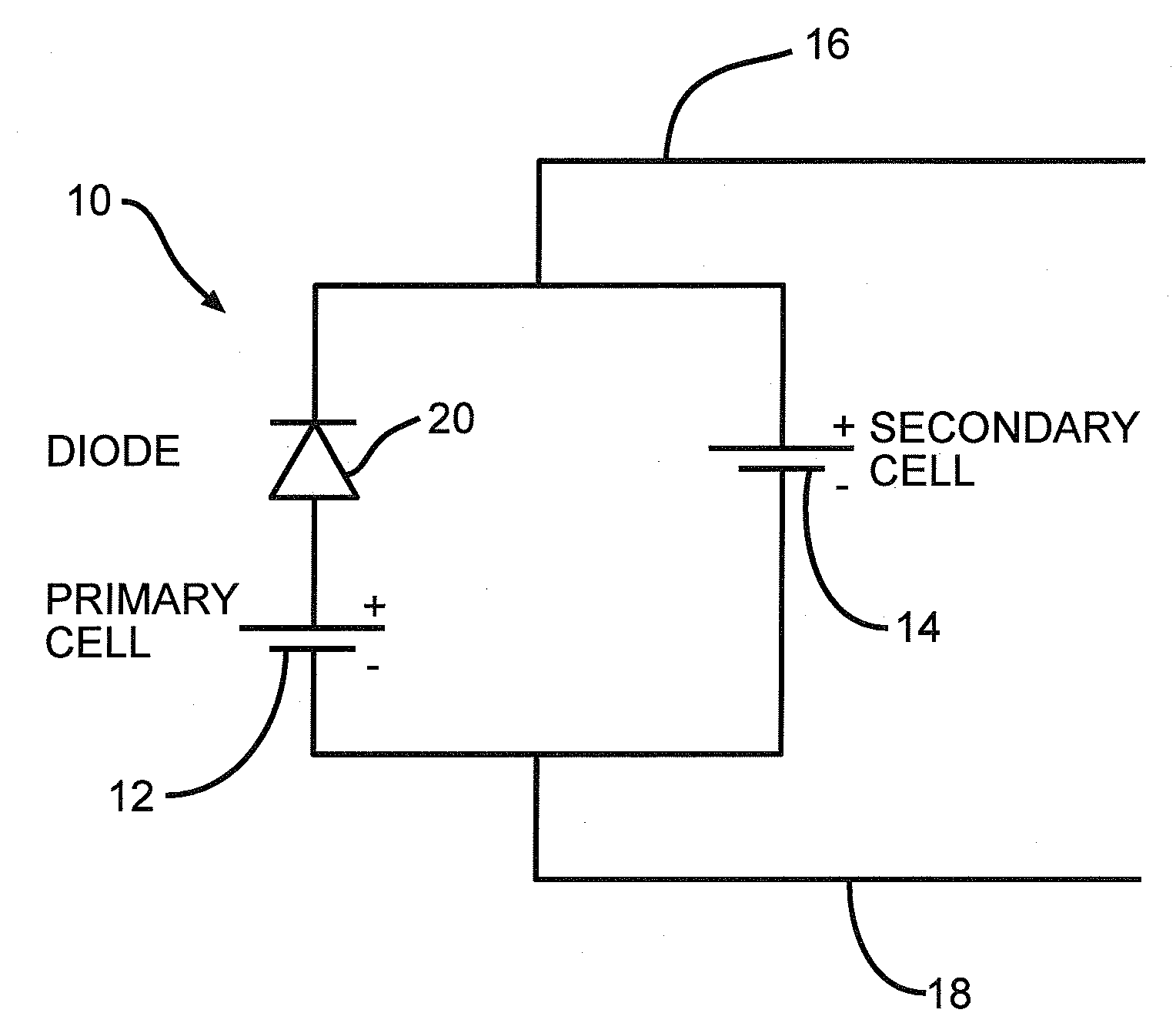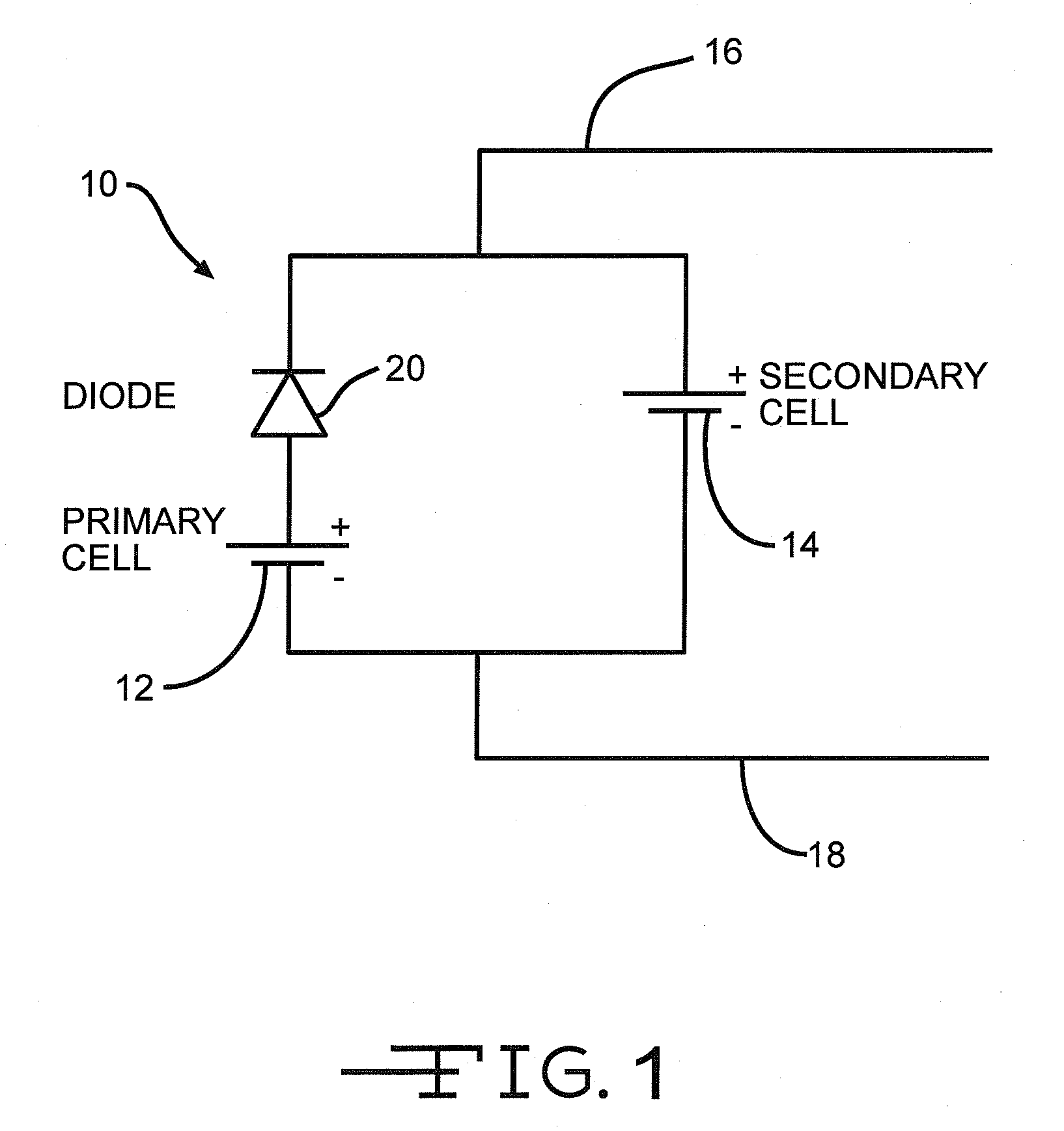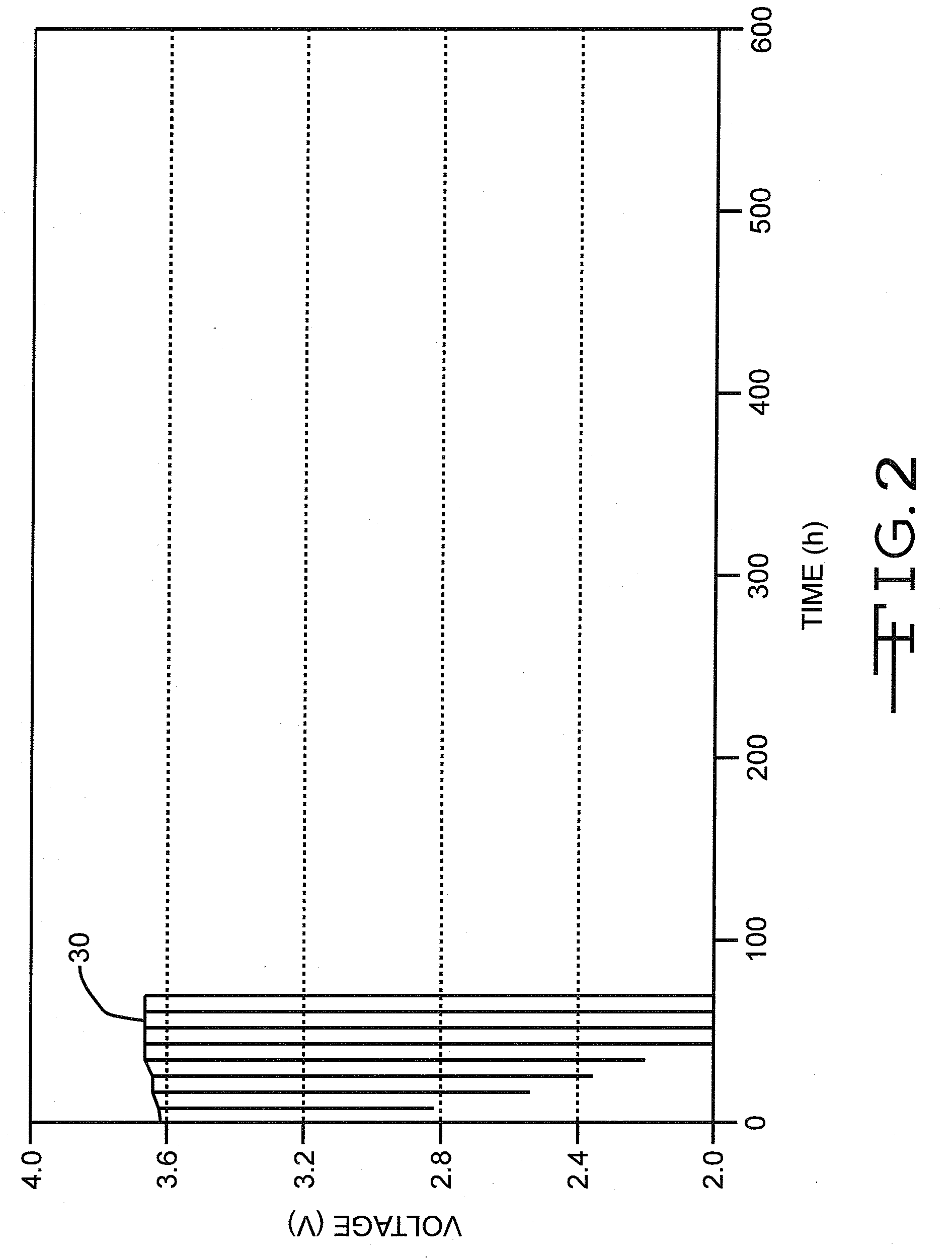In parallel hybrid power source comprising a lithium/oxyhalide electrochemical cell coupled with a lithium ion cell
a technology of lithium ion cell and parallel hybrid power source, which is applied in the field of electrochemical cell system, can solve the problems of inferior rate capability of lithium oxyhalide cell, increased voltage delay, and inability to passivate, and achieve high capacity
- Summary
- Abstract
- Description
- Claims
- Application Information
AI Technical Summary
Benefits of technology
Problems solved by technology
Method used
Image
Examples
example i
[0057]In order to demonstrate the advantages attributed to the present invention of a lithium ion cell connected in parallel with a lithium / oxyhalide cell, several tests were performed. In the first test, a lithium / BCX cell, having an open circuit voltage of about 3.9 volts in a freshly built state, was pulse discharged without the benefit of being connected to a lithium ion cell. Specifically, a Li / BCX (bromine chlorine complex thionyl chloride) primary cell of a sub-CC size (21 mm diameter, 100 mm length) was pre-discharged by 5 Ah. This cell was then placed in an environmental chamber and held at 60° C. A pulse sequence of consisting of 150 mA for 9 seconds and 3.3 W for 1.5 seconds was applied once every two hours.
[0058]The graph illustrated in FIG. 2 was constructed from the pulse discharge results. Numerical designation 30 indicates the open circuit voltage upon removing the pulse application from the cell. As is readily apparent, the open circuit voltage during pulsing immedi...
example ii
[0059]A similarly built Li / BCX cell as used in Example I to construct FIG. 2 was connected in parallel to a lithium ion cell. In particular, the cell had an open circuit voltage of about 3.9 volts in a freshly built state. The secondary cell was rated at 600 mAh and comprised a graphite anode coupled to a LiFePO4 cathode. This cell had an open circuit voltage in a fully charged state of about 3.6 volts. Such cells are commercially available from K2 Energy Solutions under model LFP123A.
[0060]In a similar manner as in Example I, this electrochemical cell system was pre-discharged by 5 Ah followed by storage in an environmental chamber at 60° C. A pulse sequence consisting of 150 mA for 9 seconds and 3.3 W for 1.5 seconds was applied once every two hours. The graph illustrated in FIG. 3 was constructed from the pulse discharge results. Numerical designation 40 indicates the open circuit voltage upon removing the pulse application from this hybrid cell system. As the graph illustrates, ...
PUM
| Property | Measurement | Unit |
|---|---|---|
| open circuit voltage | aaaaa | aaaaa |
| open circuit voltage | aaaaa | aaaaa |
| voltage | aaaaa | aaaaa |
Abstract
Description
Claims
Application Information
 Login to View More
Login to View More - R&D
- Intellectual Property
- Life Sciences
- Materials
- Tech Scout
- Unparalleled Data Quality
- Higher Quality Content
- 60% Fewer Hallucinations
Browse by: Latest US Patents, China's latest patents, Technical Efficacy Thesaurus, Application Domain, Technology Topic, Popular Technical Reports.
© 2025 PatSnap. All rights reserved.Legal|Privacy policy|Modern Slavery Act Transparency Statement|Sitemap|About US| Contact US: help@patsnap.com



